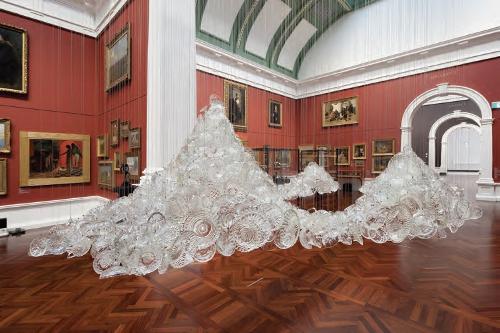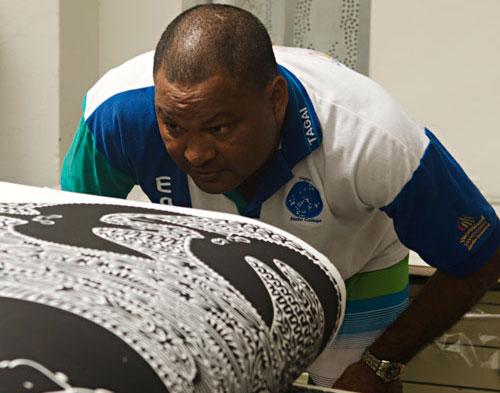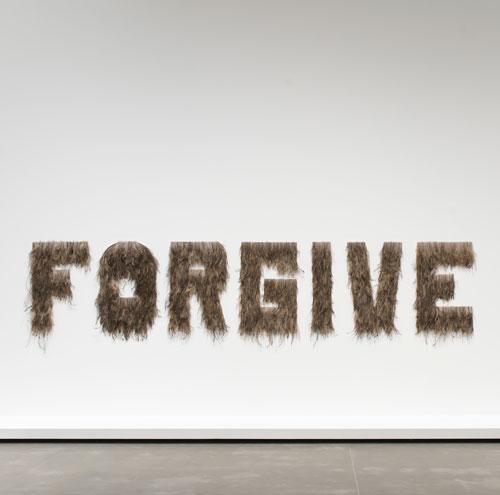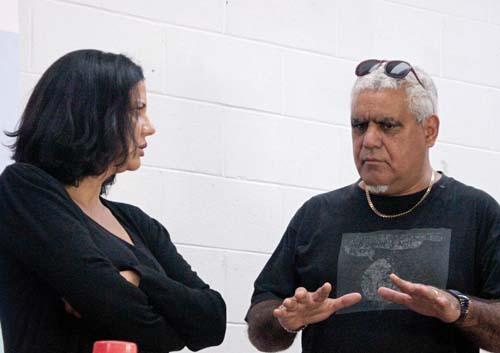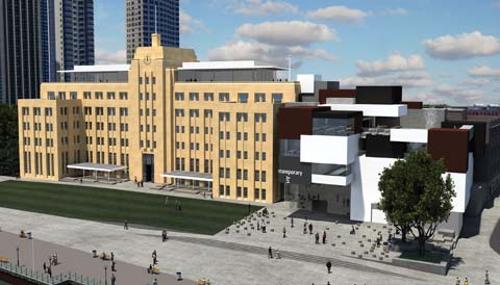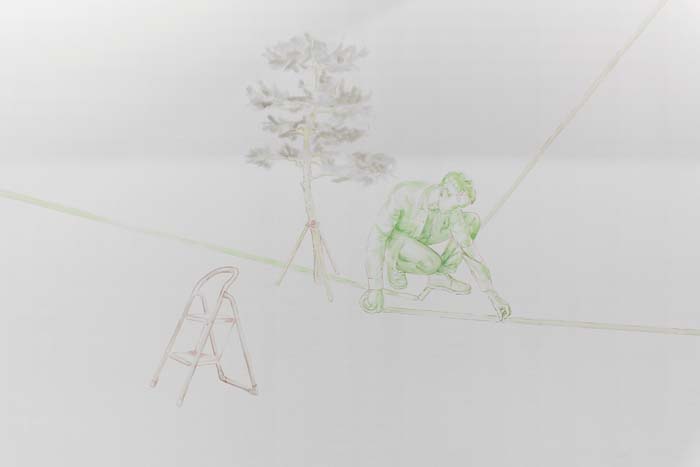
Andrew McQualter's exhibition A partial index at Daine Singer begins with three ideas. It is an isosceles of starting points, with each idea an anchored apex. With the fabric pulled taut, it tenses and flexes, weaving new connections within and between each anchor point.
What has Tim Flannery to do with Plato’s Republic to do with China Miéville’s science fiction? What has this hand facing out, to do with your bended head texting, to do with the tape that striates the white, white space? How when projected upon the gallery walls, can these clusters of activity, the stilled gestures and frozen moments, relate to each other?
Dealing in overlaps McQualter hovers closely over the hot spots of interconnection within his own fabric. When asked to create new work for an exhibition at Art Sonje in Seoul entitled City within the city, which A partial Index is a reprisal of, McQualter looked to his immediate periphery, finding patterns and drawing them towards him. For the exhibition in Seoul, which explored the relationship between subjectivity and urbanism, McQualter drew on three texts that were in his immediate terrain at the time and tweaked their orientation until they clicked into formation. As unlikely as it may be that Tim Flannery, Plato and China Miévelle could make sense together, McQualter saw that they did. The evolution of superorganisms discussed by Tim Flannery in Here on Earth reverberated with Plato’s concept of the city as a discussion, always shifting and changing, and China Miéville’s science fiction formed a home where they all might dwell. In Miéville’s worlds there are impossibly parallel cities, where dual realities coexist, wilfully invisible to one another: a city within a city.
This follow-your-nose approach to research results in nodal silken nets that when thrown out over the gallery’s white walls become diagrams of being that are intentionally loose and aerated, with plenty of space for the viewer to insinuate their own perspectives. As the artist, the helper or the viewer negotiate McQualter’s wall drawings traversing the lines that connect each cluster of activity - the kneeling life-size figures, the drawn tables and diagrams, the bent figures writing, making, thinking – we replicate the very structures of thought and making. In McQualter’s work, as in the mind, ideas bloom and dissolve, sometimes gaining a technicolour momentum and forming resolution or epiphany and other times dissipating into loose watery threads left for connection later, or never.
One of the figures depicted in A partial index stands before a piece of glass plotting yellow speech bubbles in a brain-storming diagram on the phrase "A City". Stemming from the central term are words like “intersection” and “agora”. However, seen from behind the glass they are written backwards, in a thin, permeable line that is tentative and distant, viewed from afar, with the dialogue muted. This sense of distance pervades the project, the figures are drawn as if seen through layers of tracing paper, opaque and wavering, presented as hinted suggestions, rather than with full-bore realism. Like paper laid over fresh ink, it collects a blotting of the wettest, most intensely rendered sections, revealing only part of the story, allowing the viewer to decipher the rest.
Key to McQualter’s work is the idea of discussion and relationships. In 2010 he created a work entitled A form made by... where him laid clay coils into the space between he and his partner Geoff Robinson as they stood face to face in the gallery. The resulting life-sized clay coiled pot, gives form to the space that existed between them. The activation and occupation of this space is central to all of McQualter’s work, and in A partial index he deepens his investigations.
The figures in A partial index are industrious, taping, typing, photographing, and always appearing to be actively thinking things through. Rendered in muted colours, with semi-permeable outlines they are in the process of becoming, seemingly open to the possibility of their own erasure. Their relationships between each other, between the objects depicted, and seemingly within themselves appear shaky and still forming. One figure in the wall drawing unravels a roll of tape. He had been busy creating diagonals and crossroads, connecting disparate gestures, however here he pauses. His taped points will not meet, his intersection is askew, the connection is left open. And so with each channel aloft, its contents spill, able to finally alight in the white surrounding space of dialogue.



